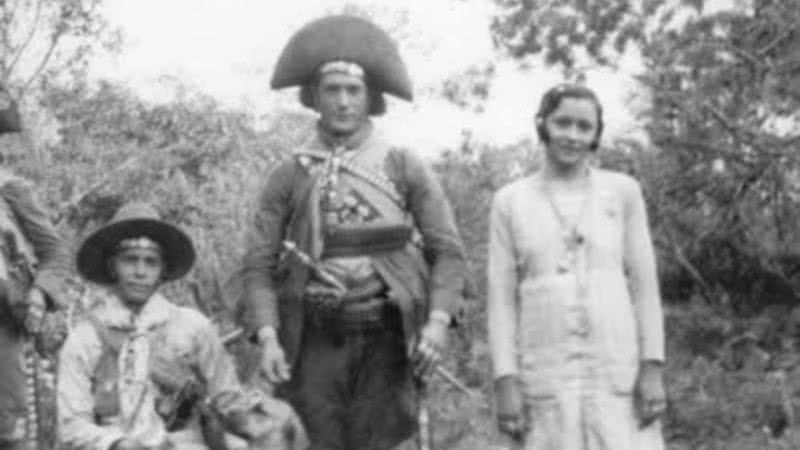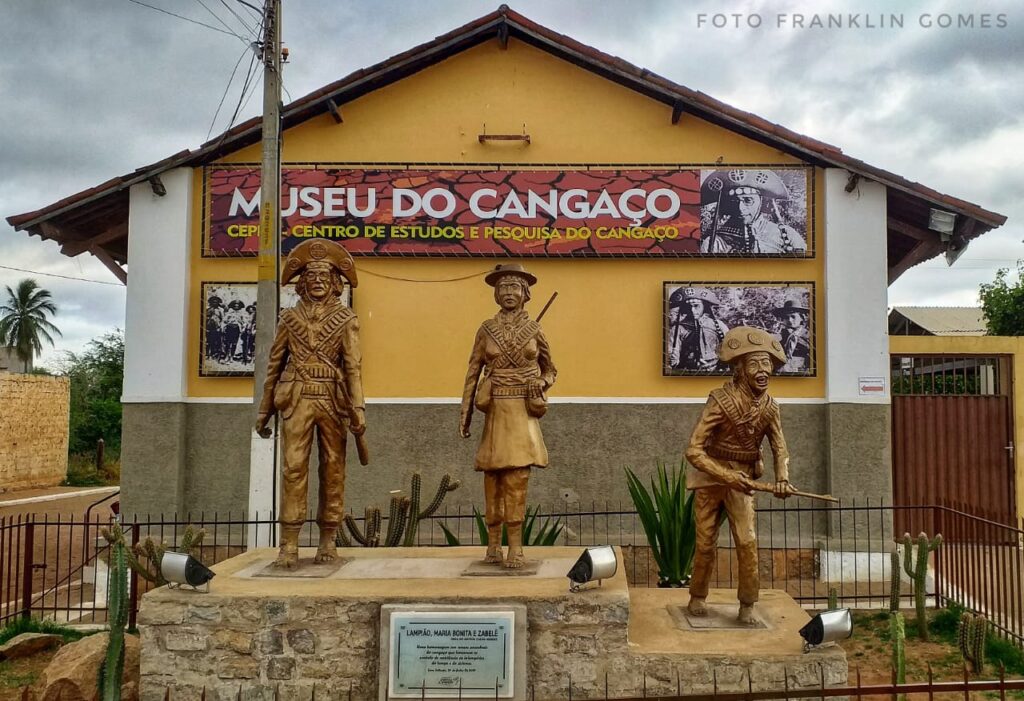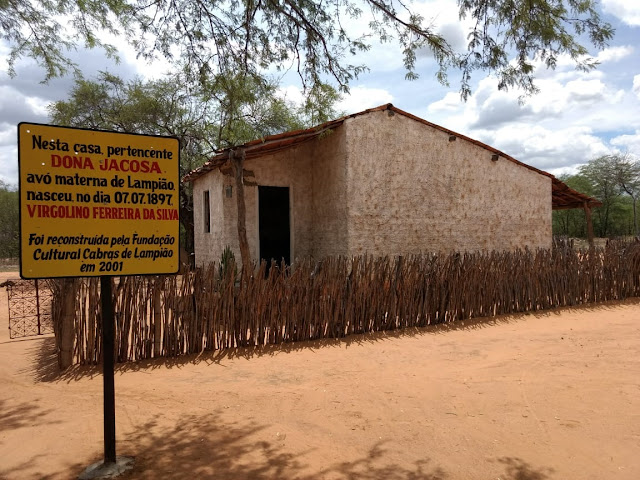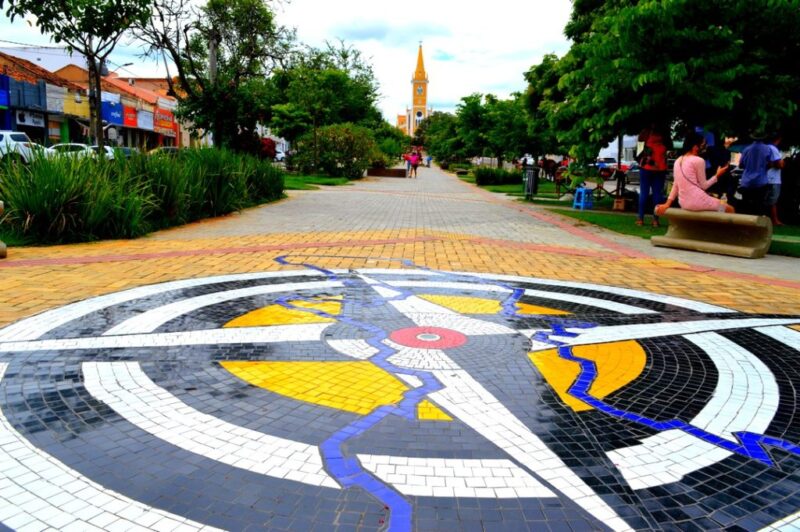Serra Talhada: The Capital of Xaxado and the Birthplace of Lampião
Serra Talhada is known as the capital of Xaxado and the birthplace of Lampião. Located in the backlands of Pernambuco, the city offers a rich mix of history, culture and natural beauty.

Historical and cultural importance
The town of Serra Talhada has great historical and cultural importance, especially as the birthplace of Virgulino Ferreira da Silva, the famous Cangaceiro Lampião.
The Cangaço, which emerged in the late 19th and early 20th centuries, was a social movement characterised by armed struggle against oppression and injustice, reflecting the difficulties faced by the people of the Northeast.

Serra Talhada in Pernambuco
The name of the town of Serra Talhada, located in the hinterland of Pernambuco, derives from the large mountain range that rises to the north and ends abruptly in a dry cut – a “talho”.
The municipality of Serra Talhada, 430 kilometres from Recife on the BR-232 motorway, proudly cultivates references to Virgulino Ferreira da Silva, the mythical lampião, born in 1898.
Not coincidentally, its main attraction is the place where the cangaceiro was born. Serra Talhada is also known as the capital of xaxado, a dance that Virgulino helped to spread (although he didn’t invent it).
At weekends you can attend the rehearsals of the various groups that play and dance this rhythm in the city.
Videos of Serra Talhada and Xaxado

Main Tourist Attractions in Serra Talhada – PE
1. The Cangaço Museum
The Cangaço Museum offers a detailed insight into the lives of Lampião, Maria Bonita and the Cangaço. Personal objects, weapons, clothing and historical photographs are on display. It’s an essential stop for anyone wanting to understand the history of the Cangaço and its influence on the culture of the Northeast.

2. Sítio Passagem das Pedras (Lampião’s House)
This is the place where Virgulino Ferreira da Silva, the famous cangaceiro Lampião, was born and lived. The house has been restored and now serves as a tourist attraction, preserving the memory of the cangaceiro.
The Passagem das Pedras site was turned into a museum in 2001 and brings together photographs, weapons and objects that belonged to the “King of Cangaço”. The site offers an immersion into the life of the sertanejo and the environment that shaped Lampião.
The site is located 35 km from the centre of Serra Talhada, on the Virgolino Ferreira da Silva State Road (PE 390), in the direction of the town of Floresta.

3. Sérgio Magalhães Square
A meeting place for locals and tourists, the square is surrounded by bars and restaurants, offering a pleasant space for strolling and leisure. The square is often used for cultural events and festivals.

Culture and Traditions of Xaxado

Grupo de Xaxado Cabras de Lampião
The Xaxado is a traditional dance from the north-eastern hinterland, particularly associated with the figure of the cangaceiro, and has striking characteristics that reflect the local culture:
- rhythmic movements: Characterised by distinct steps and fast movements, with turns and lateral movements.
- Music: The dance is accompanied by a typical band using instruments such as the triangle, zabumba, accordion and tambourine.
- Dress: The dancers usually wear typical sertão dress.
- Collective Choreography: Usually danced in groups, encouraging social interaction.
- Theme: Incorporates elements of rural life and the stories of the cangaceiros.
Cultural importance of the xaxado
The cultural importance of Xaxado is manifested in several ways:
- Cultural identity: It is an important expression of northeastern identity, representing the resistance of the Sertanejo people in the face of adversity.
- Relation to Cangaço: Reflects the memory of the cangaceiros, such as Lampião and Maria Bonita, and their struggle against oppression.
- Transmission of Traditions: Keeping popular culture alive between generations, preserving knowledge and practices.
- Promotes Tourism: Attracts tourists and contributes to the local economy, especially during festivals that celebrate northeastern culture, such as the Serra Talhada Winter Festival, where xaxado is often performed.
- Social Integration: Promotes socialisation between people of different ages and backgrounds, creating a space for celebration and community.
Cultural experiences
To the sound of the triangle, the zabumba, the accordion and the pandeiro, you can dance in Serra Talhada during the June fiestas, religious festivals or during the rehearsals of the xaxado groups on Saturday afternoons, which last about an hour.
Handicrafts
Local artisans produce a variety of items that reflect the Sertanejo culture, such as leatherwork, embroidery and ceramics, each with its own story and meaning.
Infrastructure and services
- Accommodation: The city offers a variety of accommodation options, including hotels, inns and chalets, to suit different budgets and preferences.
- Gastronomy: The local cuisine is rich in typical Sertão dishes such as carne de sol, buchada, bode guisado and corn-based dishes, as well as regional sweets.
- Access: Serra Talhada can be reached by road, with the BR-232 being the main access route. The city also has a regional airport, Santa Magalhães Airport, which facilitates the arrival of visitors from other parts of the country.
Conclusion
Serra Talhada is a tourist destination that offers a rich combination of history, culture and nature. With its links to the Cangaço and Lampião, the city has a unique historical appeal, making it a fascinating place to visit and explore. The Xaxado dance, with its cultural and social significance, remains a vibrant expression of the Northeast’s identity, celebrating the resilience and richness of local culture.
This post is also on:
![]() Português
Português ![]() English
English ![]() Deutsch
Deutsch ![]() Español
Español ![]() Français
Français





















